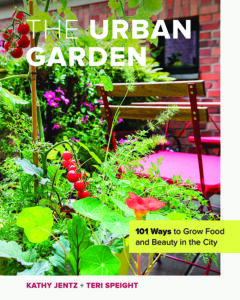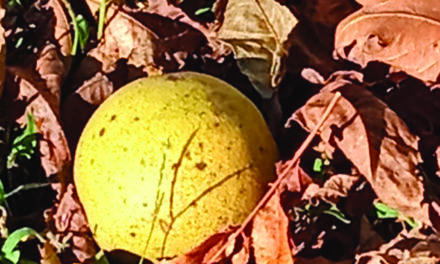Being hemmed in by a small space — be it an apartment balcony, tiny urban patio or a front step — doesn’t mean you have to give up on your garden dreams.
According to authors Kathy Jentz and Teri Speight, there are numerous ideas available to turn growing dreams into reality.
Enough ideas, in fact, to write the recently-released book, “The Urban Garden: 101 Ways to Grow Food and Beauty in the City.” 
Jentz and Speight compiled ideas from all over the world to show small-space gardeners how to showcase their personal style while holding onto functionality and productivity.
* * *
The two authors shared their thoughts on the topic in questions posed by Shore Home & Garden:
What inspired this book?
Teri Speight: “From the seasoned gardener to the beginning gardener, the nuts and bolts of gardening can be found anywhere. We knew that we had either seen different methods or tried ways to garden in an urban setting. The inspiration behind the possibilities can be a bit more challenging. Compiling this information in a book for all to read was important as the interest in gardening continues to increase.”
What was most fun about researching and writing this book?
Speight:“Finding the right photo of the topics we each addressed. We knew how to relay the content, but a photo often speaks volumes. Choosing the right photograph of the topic was quite difficult.”
How should someone approach a small space when interested in designing a garden?
Kathy Jentz: “I recommend looking at it the same way you do dressing yourself or decorating an indoor space. First, evaluate the best features and then assess any flaws. Then, you’ll know what you want to draw attention to and what to disguise or hide or play down. Next, create a focal point of your best feature — that can be something as simple as a terrific small specimen tree, a recirculating water feature, or an outdoor firepit. Then put in seating and planting around that best feature. Finally, add on from there as your time, finances, and energy allow.”
The Mid-Shore counties have a mix of large properties along with urban areas, towns and neighborhoods. How can this topic appeal to gardeners with varying degrees of space?
Jentz: “Whether you have a large property or small, we all have limited budgets and resources, so you can use the ideas and principles in the book to focus on just a few areas near your home. That is realistically where most people garden in any case as we all have only so many hours in the day.”
What are some elements of a successful urban or small-space garden?
Speight:“Planting what you love and have time to maintain. If you love color, consider using it in pot selection and plantain with drought tolerant plant material. If you have to have a plant which requires a lot of water, place it close to the house or in an area where you know you will care for it. Correctly choose plants that will not overwhelm your space. Do the research when choosing plants. It is easy to fall in love with a plant and then realize it would have been better in a larger space. Define your taste, research growth and maintenance habits of your plant choices, and enjoy your garden.”
What elements have you incorporated into your own spaces?
Jentz: “A lot of the ideas in the book come from both mine and Teri’s gardens. I am on a very busy corner, so privacy is a big concern and several of the ideas for screening I have tried out and tested here. ”
Speight: “I garden for wildlife. With no turf, my garden needs to give back to nature and provide entertainment for me. Seeing the flurry of bees and butterflies amidst the diverse blooms lets me know that I am working with nature and not against it.”
What are some of the common mistakes people make in planning and developing a garden in a small space?
Jentz: “A common mistake is to go too small in their paths. They either make them far too narrow or they buy pavers that are too small to even comfortably fit an adult foot on. We are all greedy for maximum growing space, but we should also make the paths wide enough to fit a wheelbarrow down and the pavers large enough to not feel like we are unsafe or precarious on them.”
What surprised you about urban gardens in other areas of the world?
Jentz: “In many other countries, urban gardens are completely surrounded in a way that are not here in the United States. For example, the interior courtyards of a Spanish villa or the tall, brick borders of an English walled garden. These make the spaces feel more protected, private and personal. They are more permanent and create a nice haven for a homeowner to escape the outside world.”




